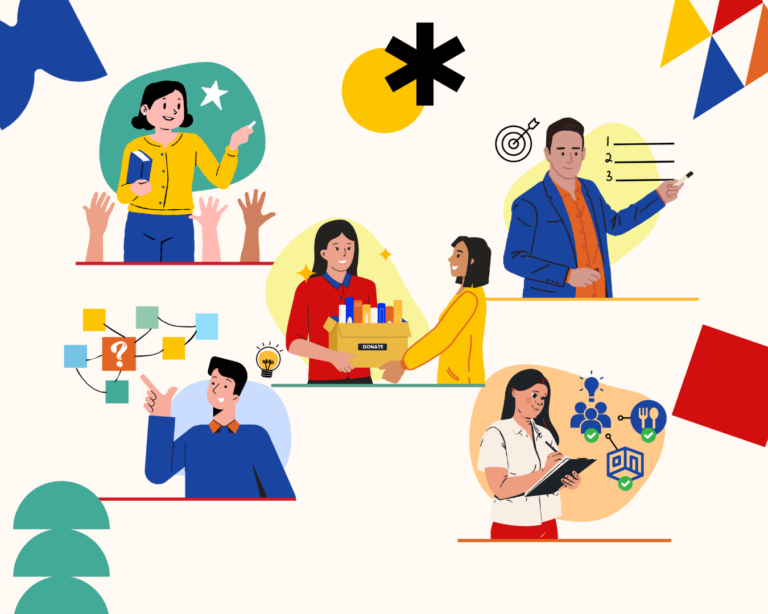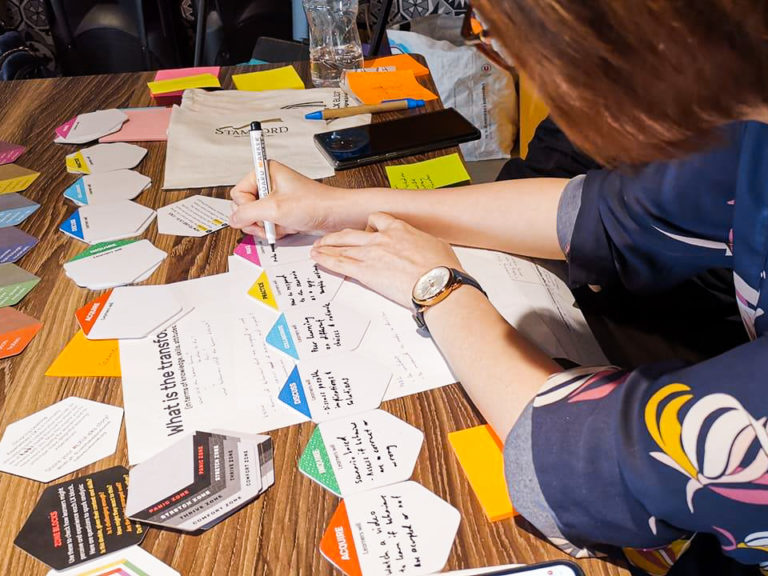Ever wonder what goes on in your students’ heads when they hear of another typhoon coming our way?
Aminin natin – hindi business as usual kapag tag-ulan sa Pilipinas. Every year, the rainy season brings us educators a number of challenges. Nandiyan ang class suspensions na minsan maaga, minsan too late. Baha papuntang school, baha sa bahay. Mahina ang internet, di natuyo ang uniform. Kinakabahan yung mga bata dahil sa lakas ng ulan, o distracted kasi ang sarap matulog. Paano ba talaga mag-aral kapag bumabagyo? Kaya ba talaga nila? Gusto ba talaga nila?
There’s a lot about the rainy season and our respective school’s protocols that we cannot control. We can, however, try to do little yet impactful things in our own classes. Here are some things you and your students can try as you gear up to make learning happen amidst the rainy season. Let us know if you have tips to share too, or if you get to try any of these!
Maging Malinaw
May pasok ba? – a perennial question asked by learners, their guardians, and even us teachers during the rainy season. When learners are confused and do not understand how classes will proceed, they cannot participate.
To make clear learning experiences, try these:
- Establish clear communication channels, making sure announcements reach all learners and their guardians on time
- Consolidate resources and links to prepared learning materials, making them easy to use and follow
- Clarify what is required and what is optional, allowing learners to make informed decisions about how they engage
“I create a contact group to make sure that everyone will receive announcements. I also gave everyone a list of credible accounts to monitor for possible class suspensions (e.g., LGU DRRM page, LGU page, page of incumbent local officials, PAGASA and the like). In this way, we can also help our learners and their families to be informed with factual and accurate information since class suspension announcements on social media can be done in an instant by anyone.”
– Erin Abraham Crisostomo, Public School Teacher, Pinagbakahan Elementary School
Gawing Kasya Lahat
Our learners experience the rainy season differently. Understanding the diverse contexts of our learners helps us design different ways for them to engage.
Here are some ideas on how to keep our learning experiences inclusive:
- Do a quick survey to understand your learners’ contexts. Ask – How do you go to school? What are the usual conditions in your residential area when it rains heavily? What are other things that might keep them from engaging in class during the rainy season? Choose a survey type that best allows your learners to share their stories – a printed form, journal or index card prompts, etc.
- Reimagine your lesson in different formats such as a recorded lecture (have you tried Loom?), a reading material, an interactive space, or a self-paced module.
- Allow different ways to participate and recognize all efforts to engage. Class norms and guidelines are a good opportunity to do this.
For example:
Engage as you can – cameras on or off, whichever helps with your bandwidth.
If you drop out of the call, you may watch the recording of our session.
For the activity, you may work in breakout groups or individually.
Maging Makatao
Baha, walang masakyan, basang uniporme, nag-aalala, at hindi makapag-focus. Teach, kaya ba talaga nila? Our learning experiences should consider the realities our learners face during the rainy season.
Here are other ways to keep your learning experiences human:
- Adjust deadlines and submission protocols considering how the rain can disrupt our learners’ routines, resources, and focus. P.S. Kung hindi mo pa naman po mache-check kaagad, give mo na sa kanila, teach!
- Involve your learners in designing a Plan B for a rainy day. Ask – what’s a humane lead time for you to know what modality we’ll be using for the day? What communication channel should everyone check first? How do we keep everyone accountable?
- Let them decide how they will engage with your prepared materials. It’s like having them choose their own adventure.
For example:
Answer any 2 of the 4 reflection questions below
Work alone or with a partner
Answer any 2 of the 4 reflection questions below
“I work with our teachers to ensure that books, as well as printed copies of modules, activity sheets, and other available learning resources are distributed to learners ahead of time. In this manner, pupils without access to gadgets and internet connectivity especially in remote areas have the materials to use during sudden class suspension, or whenever classes are shifted to distance learning modality. In such cases, it is helpful to provide avenues where learners and parents can seek support and assistance from the teachers when working on the learning activities.“
– Mary Anne Alcantara Cataag, Principal, San Joaquin Elementary School
Magsulong
How does the rainy season make you feel? Nostalgic, nakakaantok, o nakakakaba? The rainy season evokes different feelings in all of us. Our learners’ motivation, interest, and energy levels may be affected too, so we teachers work to keep them inspired.
Here are some ideas on how we can design rainy day learning experiences that are inspiring:
- Check in with forward-looking and goal-setting prompts. Some prompts you can try – What’s your intention for class today? How do you want to feel by the end of the session? What will make this a good class day for you?
- Allot time and a safe space during class for learnings to candidly share about their rainy day contexts. Simply ask, kumusta kayo? Acknowledge their stories and thank them for showing up regardless of their context.
- Use the rainy conditions as a real-world and socially-relevant context for framing your lesson. A lesson on water cycle: How do you think the clouds can hold so much rain? A lesson on equity: It’s raining heavily today. If I give you all 100 pesos to buy data to join our online class, is this a example of equitable access?
On one hand, we can wake up every morning, look outside the window and make quick decisions on how to hold classes based on visible weather conditions. On the other hand, we can design our classes more intentionally using what we know about our learners and all our past experiences with teaching during the rainy season to make learning experiences that are clear, inclusive, human, and inspiring.
It’s not just another rainy class day. It’s another day that impacts the lives of our learners.
Article by: Celina Buensuceso, with contributions from Erin Crisostomo and Mary Anne Cataag
Layout by: Regine Salumbre and Jichele Urma






